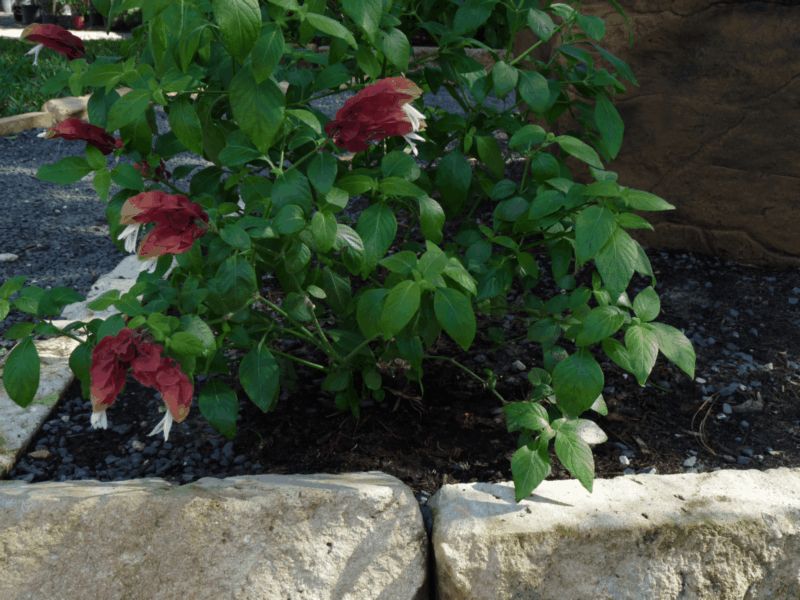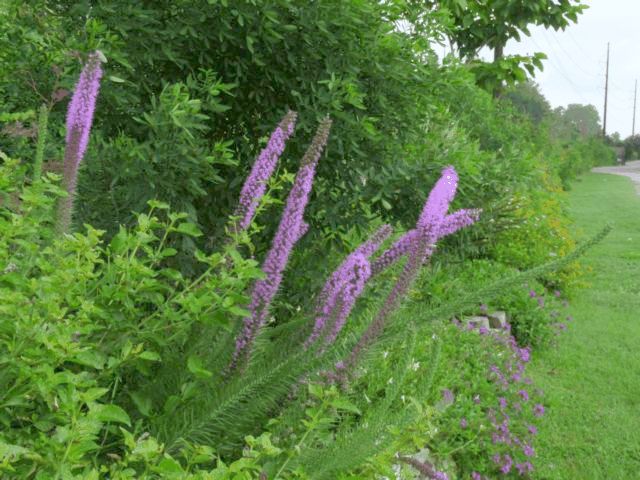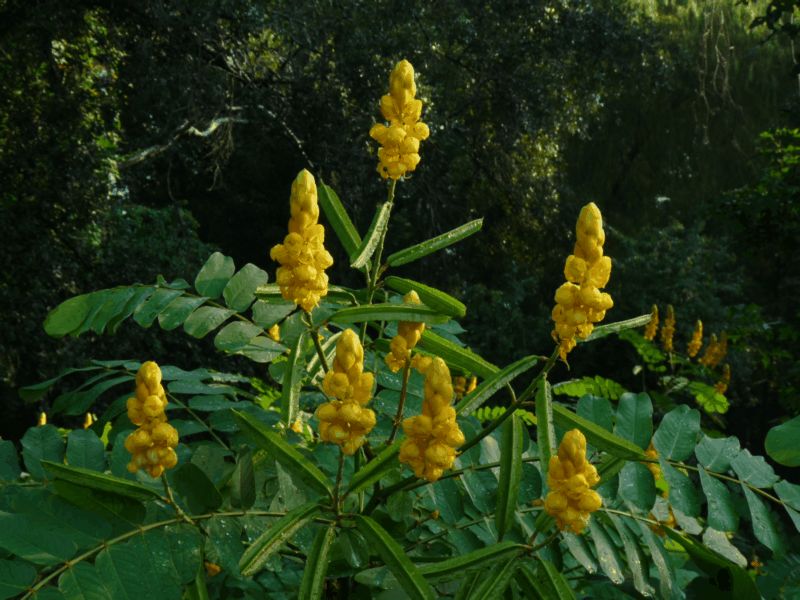




What you can't see...can help you!
MICROORGANISMS - The Benefits!
- Microbes turn dirt into soil. They give the soil body and texture as well as the feel and smell of healthy soil.
- A functional ecosystem contains an abundance of microorganisms such as fungi and bacteria, to small animals, etc. Over 50 types or groups have been proven beneficial to the soil and to plant growth
- "A healthy soil has a constantly changing, but always active population of microbes. There are approximately 900,000,000,000 (nine hundred billion) of these lifeforms in every one pound of healthy soil." H. Garrett, Harmony With The Environment, Acres USA, June 1993
- Microorganisms help roots take up nutrients and are required by most plants
- They bring nutrients into the ecosystem from the atmosphere and mineral reserves locked up in the soil
- Microorganisms break down detritus into useful soil products like humus.
- Microorganisms release minerals in a soluble form from soil and organic matter.
- They protect roots from pathogens
- Microorganisms help hold soil aggregates together, creating channels through which plants roots grow, soil animal’s move, and water percolates.
- Mycorrhizal fungi have been shown to benefit plants by: enhanced nutrient absorption, increased drought tolerance, improved transplantability, and reduced susceptibility to root diseases. Mycorrhizal fungi increase the length and mass of root systems enabling the plant to absorb nutrients better, they also convert nutrients in to a form easier for plants to use and absorb. Since the root mass and size has been increased moisture can be absorbed from a much larger area giving greater drought resistance. Disease protection may be one of the most important aspects of the fungi's presence. Mycorrhizal fungi increase the survivability rates of newly planted or transplanted trees and plants, resulting in quicker root growth, larger root systems and in general increased disease resistance. With healthy root systems plants grow faster and have healthier top growth.
-
Most crop plants and
weeds are colonized by beneficial
vesicular-arbuscular mycorrhizal (VAM) soil
fungi, forming symbiotic associations called
mycorrhizae ("fungus roots"). It has
been found that these associations improve plant
nutrition and yield, protect plants from
pathogens, and improve plant resistance to
environmental stress. Journal of Alternate
Agriculture, V9N4,1994, p.157-161
- Mycorrihizal fungi, as colonizers not only of roots but of the bulk soil have been found to play a major role in conserving soil as in enhancing plant productivity. This fungi mediate the movement of mineral nutrients from the soil to the plant and carbohydrates from the plant to the soil...only recently has the effects on soil aggregation been recognized. Journal of Alternate Agriculture, V9N4,1994, p.157-161
- Tests that inoculated soils with mycorrihizal fungi show plant response results (seed yield, soil aggregation, growth, etc.) varies depending on many factors from the plant species to existing soil conditions.
- Several types of fungus, attacks and destroys parasitic nematodes
-
Research has shown
that the fungus Trichoderma sp.:
- increased growth between 150-250 percent as compared to soils without the fungus
- has increased germination rates of seeds
- caused earlier and increased flowering of bedding plants. Greenhouse Manager, November 1992.
- Many species (most) of nematodes are beneficial, some species attack and feed on larva in the soil such as grubworms.
- Wood mulches, in particularly shredded hardwood mulches or course textured organic mulch stimulates the growth of mycorrihizae fungi (pine bark is not near as good as hardwoods). Also dry molasses and lava sand will help stimulate microorganisms to reproduce faster.
- The productivity of the soil is proportionate to the number, activity and balance of microorganisms (Medina Magazine).
- The White Rot Fungus that decomposes dead wood also has the ability to clean up (digest) chemicals such as: pentachlorophenol (a wood preservative more toxic than CCA), dioxins, cyanides, DDT, TNT (explosive), creosote, and coal tar. Other toxic chemicals being tested are Lindane and Toxaphene. Organic Gardening, July/August 1994
-
Microorganisms have
beneficial relationships with plants, they aid
plants in several ways;
- they aid roots in taking up water and nutrients
- improve root growth by producing growth promoting substances
- helps to protect roots from attacks by pests and disease
- Microorganisms get their food required for growth and reproduction from organic matter in the soil (of which compost and mulch is an excellent source).
- Microorganisms release minerals in the soil for plants to use and their activity increases as the soil temperature increases in the spring, when plants need the minerals the most.
- The abundance and activity of soil organisms is much greater immediately right next to roots compared to root free soil, this is called the "rhizosphere effect". Microbe population densities are typically 2-20 times higher and sometimes over 2,000 times higher! Acres USA, November 1994.
- Endophyte's is a friendly fungus that has a mutually beneficial association with certain species of grasses, it derives food as well as protection from living between the cells of the turfgrass plant. This fungus does not harm the host plant but does produce toxins that are released into the leaves of the plant and these toxins are harmful to surface feeding insects. Studies at Rutgers University and Lofts Seed Inc. have shown that grass with endophyte’s present is able to withstand drought and weed invasion better. In addition the fungus produces toxins that repel chinch bugs, sod webworms, and other surface feeding insects.
- Researchers have discovered a group of fungi that protect lawn grasses from pests. The fungi is called endophytes and live in a symbiotic relationship that benefits both plant and fungus. The fungi produce toxins that are harmless to the grass (and humans) but repel chinch bugs, sod webworms and other surface feeding insects. (Fine Gardening, July/August 1993).
- Research at Rutgers University and Lofts seed company indicate that grass plants inoculated with endophytes are more vigorous, and able to stand drought and weed invasions better. (Fine Gardening, July/August 1993).
- We have evidence that CO2 produced by the respiration of microorganisms in the soil is an important factor in the supply of the gas to photosynthesizing plants. A soil rich in decomposing organic matter provides a much higher level of CO2 in the air just above the soil than a barren, infertile soil.
-
There are 930 billion
microorganisms in each one pound of soil under
turf. There are about 70 pounds of them living
and working in each 1,000 square feet of root
zone. Many of these organisms are very
short-lived, so the turnover is rapid. One
Hundred pounds of dead microorganisms will
contain close to ten pounds of nitrogen, five
pounds of phosphate, 2 pounds of potassium, one
half pound of calcium oxide, one half pound of
magnesium oxide, and one third pound of sulfate.
With 70 pounds of these creatures per 1000 square
feet of root zone, the poundage adds up to enough
per acre for excellent crop production. Elliot C.
Roberts, The Lawn Institute.
-
According to Dr. E.
Ingham, Soil Biologist, Oregon State University,
a teaspoon of healthy soil is teeming with:
- 100 million or so individual bacteria
- 50 to 150 meters of fungal threads
- 10,000 to 100,000 protozoa
- - 5 to 500 beneficial nematodes
- bacteria 800,000,000,000,000,000,000 2,600
- actinomycetes 20,000,000,000,000,000,000 1,300
- fungi 200,000,000,000,000 2,600
- algae 4,000,000,000 90
- protozoa 2,000,000,000,000 90
- nematodes 80,000,000 45
- earthworms 40,000 445
- insects & other arthropods 8,160,000 830
Type Of Organism number/acre pounds/acre
-
Beneficial
vesicular-arbuscular mycorrhizal (VAM) fungi
colonize the roots of most plants and weeds,
forming symbiotic associations called mycorrhizae
(fungus roots) and have been shown to:
- improve plant nutrition and yield
- improve plant resistance to stress
- colonizes bulk soil in addition to roots conserving soil
- improve soil aggregation
- enhances plant productivity
- mediate the movement of mineral nutrients from the soil to the plant
- mediate the movement of carbon compounds from the plant to the soil
- promote beneficial effects on soil aggregation, American Journal of Alternative Agriculture, Volume 9, No. 4, 1994, p. 157
-
Mycorrhizae fungi
live in a symbiotic relationship with plant
roots. Some plants can not survive without these
root-fungus associations. Benefits include
increased water and nutrient absorption, reduces
transplant shock, and controls certain root
diseases. Growlines, Sept./Oct. 1995.
Note: Unfortunately most plant propagation programs (rooting mixes, fumigated soils, synthetic chemical fertilizers, and treated water (chlorine and fluorine) discourage their development. And you thought you didn't have a green thumb. - A study of leaf litter in red oak forests in New York state found that 1 square meter of leaves 12" thick holds 500 to 5,000 miles of fungal filaments (Louis Calder Center, Armonk, New York). Margaret Carreiro, Fordham University.
- Over 1,600+ species of white rot fungus have been identified. This fungus cannot tolerate temperatures over 40 EC hence often found in mesophilic composting and bioremediation projects. White rot breaks down lignin (nature's "plastic"), the fungus wants the cellulose inside the cell and has to break down the lignin cell wall to get at it. As a result white rot fungus can biodegrade hundreds (maybe thousands) of difficult chemicals (i.e. used in the field can break down TNT at concentrations of 65,000 PPM!). Michael Keene, PhD, Utah State University
- Trees worldwide are having a decline problem that results in increased disease and pest problems and in eventual tree death. This problem has been linked to unhealthy soil caused by use of synthetic chemicals and improper soil management which have killed off the required microorganisms. The recommended treatment is to apply composted mixed wood and/or leaves around the base of the tree restoring the microorganisms and creating a healthy environment for the microorganisms. Dr. Alex Shigo, Tree Care Industry, October 1996.
-
Dr. Elaine Ingham
(soil microbial ecologist) at Oregon State
University has completed studies on over 6,000
soil samples from around the world. She has found
that in ALL cases, all nitrogen (N) inputs to the
soil feed the microbes first. ALL N must be
processed by microbes before plants can use it
(i.e. the useable N is in the "manure"
produced by the microbes!). Acres USA Conference,
December 1996.
Also several excellent papers on the World Wide Web: http:\\www.soilfoodweb.org Look for "The Soil Foodweb: It's Importance in Ecosystem Health". - Researchers at the USDA's Soil Microbial Systems Lab have discovered a new protein named glomalin, which is produced by fungi that helps glue soil particles together making it easier for air and water to move through the soil. The improved circulation also creates a healthier environment for plants and beneficial microorganisms. Tests have shown that no-tilled corn plots were more stable and contained more glomalin than tilled plots. Soils with the well stabilized structure were far less prone to erosion from wind or water. BioCycle, December 1997.
- Studies at the Arnold Arboretum have discovered a new class of plants, actinorhizal plants, that fix nitrogen on their roots with an association of type of actinomycete. It is believed these plants-microbe associations will fix as much nitrogen into the soil as alfalfa.